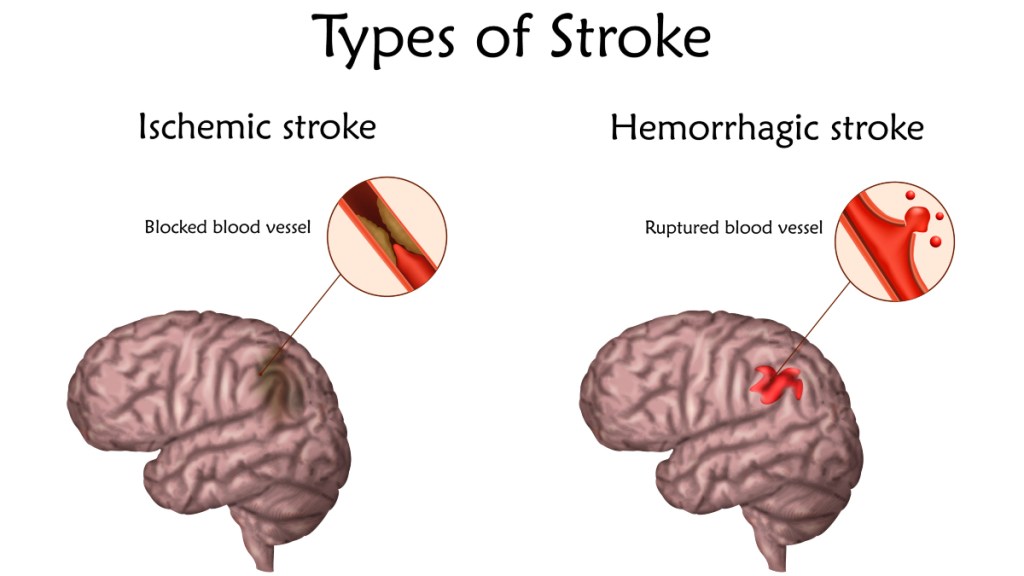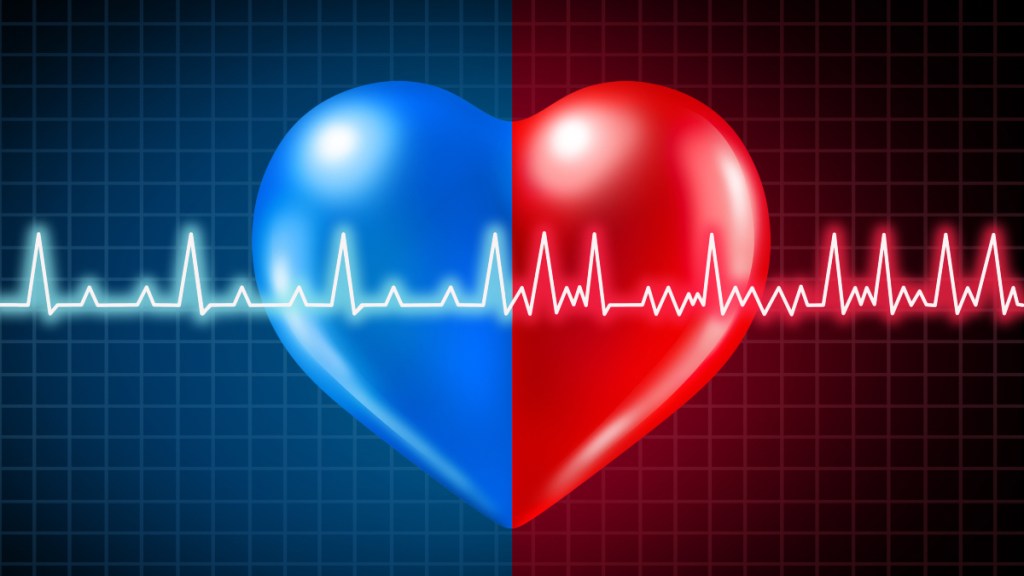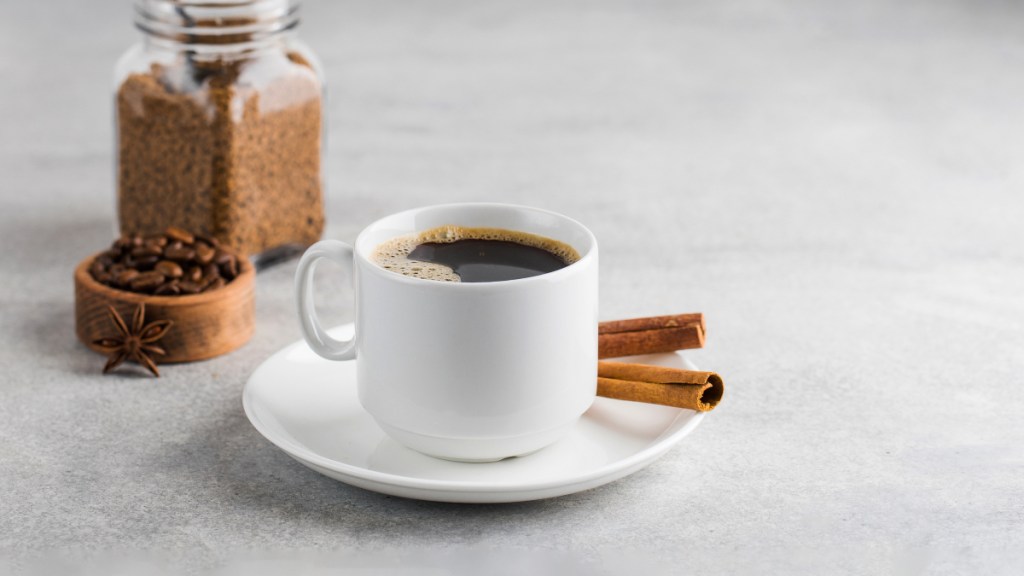The Sneaky Silent Stroke Symptoms Doctors Want Women to Know + How to Cut Your Risk
Simply sprinkling this spice into your morning coffee wards off trouble

Numbness in your arm, slurred speech, confusion… you know the classic signs of a stroke. But can you have a stroke and not know it? It turns out the answer is yes, and these types of strokes are often called silent strokes. They can happen anytime and often don’t come with symptoms (hence the name). And when there are symptoms, they can be so faint, it’s easy to chalk them up being stressed or tired. So what are the silent stroke symptoms you need to watch out for, and why are they so important to catch? Here, doctors break down everything you need to know.
Silent stroke symptoms
“A silent stroke is a stroke, the only difference is a person either doesn’t experience or recognize the subtle symptoms,” says Romie Mushtaq, MD, a neurologist and integrative medicine specialist in Orlando, FL, and author of The Busy Brain Cure. Symptoms can include a sudden lack of balance, problems with memory, a rapid mood change and a temporary loss of muscle movement such as losing control of strength of your grip or legs, says Dr. Mushtaq.
Even though a silent stroke doesn’t have quite the same symptoms as a symptomatic stroke, the mechanism by which it happens is the same. There are two main types of strokes. An ischemic stroke, which accounts for about 87% of strokes, occurs when when a blood vessel in the brain becomes blocked or narrowed, preventing enough oxygen-rich blood from getting to the organ. A hemorrhagic stroke occurs when a blood vessel bursts and leaks blood into the brain. (Click through to learn how supplementing with quercetin cuts your odds of an ischemic stroke.)

As a result, a stroke causes damage to brain cells in certain areas of the brain, says Dr. Mushtaq. The damage and symptoms resulting from a silent stroke depend on the size and location of it in the brain, she says.
“The biggest concern is with a silent stroke [is that] there’s a high risk of developing a larger clinical stroke, one with more debilitating symptoms such as loss of speech and trouble moving your limbs,” warns Dr. Mushtaq. The bottom line: Consider a silent stroke a warning sign that you need to take action to prevent another one, she adds.
Women are more likely to suffer a stroke
In the US, 795,000 people have a stroke every year, and about 55,000 more women than men will experience one. According to the Centers for Disease Control and Prevention (CDC), stroke is the fifth leading cause of death in women — 20% of women between the ages of 55 and 75 will have a stroke.
“While men are at higher risk of stroke early in life, that risk reverses to women with advanced age,” says Bharti Manwani, MD, PhD, a vascular neurologist and an associate professor in vascular neurology at McGovern Medical School at UTHealth Houston. One reason for the increased numbers may be because women have longer life expectancies than men. Therefore, their lifetime stroke risk is higher.
“As people get older, they often accumulate more risk factors for strokes, such as high blood pressure, cholesterol, diabetes and atrial fibrillation [a type of heart arrhythmia],” says Dr. Manwani. “Atrial fibrillation tends to cause larger strokes with more disability, and women experience more strokes from this heart rhythm than men.” (Click through to see the drinks that lower blood pressure.)

Can stress cause a stroke?
It can contribute to one indirectly. In fact, study in the European Heart Journal found anger or emotional upset was linked to an approximately 30% greater chance of having a stroke within 1 hour of feeling these emotions. Why? Stress increases your blood pressure and forces your heart to work harder. This can raise the risk of a clot forming. Other stroke risk factors include weight gain and suffering from migraines (which are more prevalent women). (Click through to learn how trendy mushroom coffee can help you tame stress.)
Silent stroke symptoms: How strokes are detected
A silent stroke is typically diagnosed by chance. “It’s more common a silent stroke is discovered is when the patient goes to their provider for another reason, such as they fell and hit their head,” says Dr. Manwani. “The provider will most likely do a MRI or CT scan. That’s where they may find spots or lesions in the brain, indicating they had a prior stroke they didn’t know about.”
The more silent stroke lesions, the greater the chance you may have cognitive issues. That can include your memory not being same or not feeling as sharp as you used to, says Andrei Alexandrov, MD, a professor of neurology at the University of Arizona College of Medicine in Phoenix, AZ. “The presence of lesions tells me we need to step up and take better care of your health and be aware of the risk factors.”
Once a silent stroke is detected, your doctor can try to piece together when it may have happened and why.
4 ways to reduce your risk of a silent stroke
Now for some good news: 80% of strokes are preventable, the CDC reports. One of the best ways to cut your stroke risk is to schedule an annual physical, says Dr. Manwani. “You may not know you have high cholesterol, high blood pressure or diabetes because you haven’t been diagnosed yet. Those are the things only a doctor’s office can determine,” she says.
Here, four more easy ways to keep a silent stroke at bay:
1. Sip cinnamon coffee
Adding cinnamon to your coffee is more than just delicious. The tasty topping slashes your risk of a silent stroke and its sneaky symptoms. How? Cinnamon lowers your blood pressure, blood glucose (sugar), inflammation and “bad” LDL cholesterol. All four of these are significant risk factors for a stroke.

Drinking java has been linked with a reduced stroke risk, too. The proof: A study in the Journal of Stroke and Cerebrovascular Diseases found people who drank at least 1 cup of coffee (but no more than four) had a lower risk of stroke. Researchers say the sweet spot is 3 to 4 cups of coffee a day, which curbs your risk 21%. Coffee’s bioactive compounds and caffeine are neuroprotective.
2. Catch up with a friend
Been meaning to call your friend or grab brunch with your sister? Here’s one more reason to get together: Connecting with loved ones wards off strokes, according to a study in the Journal of the American Heart Association. The researchers found people who are socially isolated and experience loneliness are at an increased risk for stroke.
But simply spending time with folks you care about (even just connecting on a video chat) thwarts loneliness. Plus regularly checking in with loved ones reminds you that others care about you. This, in turn, encourages you to follow healthier lifestyle habits.

3. Eat an hour earlier
Early bird special? Yes, please! A study in Nature Communications found people who ate just one hour earlier cut their stroke risk. Researchers found those who ate breakfast at 8 am had a lower risk of cardiovascular disease compared to those who ate at 9 am. And eating dinner before 8 pm is linked with a lower risk of cerebrovascular diseases (such as a stroke) compared to eating after 9 pm.
It turns out your diet influences your biological clock, acting as a “synchronizer,” says study author Bernard Srour, Ph.D, PharmD, MPH. “The daily cycle of food intake alternating with periods of fasting synchronizes the peripheral clocks, or circadian rhythms, of the body’s various organs,” he notes. “In turn, this influences cardiometabolic functions such as blood pressure regulation,” which can help keep a silent stroke at bay.
4. Drizzle some EVOO
You already know a heart-smart Mediterranean diet lessens your odds of a stroke. The diet, which includes fruits, vegetables, whole grains and lean meats, lowers LDL cholesterol, high glucose and high blood pressure. Plus it wards off obesity, all risk factors for a silent stroke.
One of the staples of a Mediterranean diet is olive oil, which is a top food for warding off strokes. But the key to maximizing the benefits is using extra virgin olive oil. Why? “Extra-virgin olive oil is produced by cold pressing whole olives without any heat or chemicals,” says Dr. Alexandrov. “It contains the least amount of fatty acids compared to other types of olive oil.”

Dr. Alexandrov recommends drizzling EVOO over chicken, fish and veggies. And if you’re anything like us, it’s a must when you’re tossing together a salad, too. (Click through to learn how olive oil also aids weight loss.)
For more ways to protect your heart and ward off strokes:
How to Prevent Heart Disease: These 5 MD-Backed Shortcuts Are Too Easy Not to Try
This content is not a substitute for professional medical advice or diagnosis. Always consult your physician before pursuing any treatment plan.


















